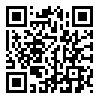<>
Volume 8, Issue 3 (9-2025)
JSAL 2025, 8(3): 1-25 |
Back to browse issues page
Download citation:
BibTeX | RIS | EndNote | Medlars | ProCite | Reference Manager | RefWorks
Send citation to:



BibTeX | RIS | EndNote | Medlars | ProCite | Reference Manager | RefWorks
Send citation to:
Ghorbani V, Rahimi A. (2025). Investigating Various Methods of Intercultural Teaching Within the Iranian Educational System: A Qualitative Survey [In English]. JSAL. 8(3), 1-25.
URL: http://jsal.ierf.ir/article-1-170-en.html
URL: http://jsal.ierf.ir/article-1-170-en.html
1- Instructor, English Language and Literature Department, Faculty of Literature and Foreign Languages, Arak, Iran , s39611171003@phd.araku.ac.ir
2- International Agriculture University, Faculty of Foreign Languages, Tashkent, Uzbekistan
2- International Agriculture University, Faculty of Foreign Languages, Tashkent, Uzbekistan
Abstract: (1524 Views)
In today’s globalized era, intercultural communication has become one of the most crucial pillars of language education, especially in English classrooms. Despite its importance, the Iranian educational system still heavily emphasizes linguistic skills—grammar and vocabulary—while cultural and intercultural dimensions often remain neglected. This study aims to explore and identify effective methods of intercultural teaching in Iranian English classrooms in order to enhance teachers’ and learners’ cultural awareness and communicative competence. Using a qualitative design, 150 English teachers aged 25–50 were selected through convenience sampling. The data, collected via classroom observations and semi-structured interviews, were analyzed through inductive content and thematic analysis. Findings revealed that traditional approaches such as the grammar-translation method can be productive only when combined with communicative and experiential techniques like role play, discussion, interviews, and project-based tasks. Teachers frequently applied pair work, group work, and comparative discussions to help learners construct and reflect on cultural identities while engaging in cooperative learning. Moreover, the integration of multimedia tools—films, music, and cultural simulations—proved to be highly effective and supportive of experiential learning. The use of technology not only strengthened students’ linguistic competence but also improved their sociocultural and intercultural skills. The overall results indicated that Iranian teachers tend to merge traditional and modern approaches, adopting interactive, contextual, and multimedia-oriented strategies that enrich intercultural communication in the language classroom. This study therefore provides valuable implications for language educators, textbook authors, and teacher trainers by highlighting practical frameworks for integrating culture and communication in teaching. It also paves the way for future quantitative and mixed-method studies focusing on intercultural assessment and teacher development, both within Iran and globally.
Keywords: Intercultural Education, Language Teaching in Iran, Communicative Language Methods, Traditional Language Learning, Communicative Language Tasks
Type of Study: Research |
Subject:
Language Teaching
Received: 2025/02/10 | Accepted: 2025/06/24 | Published: 2025/09/1
Received: 2025/02/10 | Accepted: 2025/06/24 | Published: 2025/09/1
Send email to the article author
| Rights and permissions | |
 |
This work is licensed under a Creative Commons Attribution-NonCommercial 4.0 International License. |






